7 Things I Learned From A Weekend With A VW ID.3
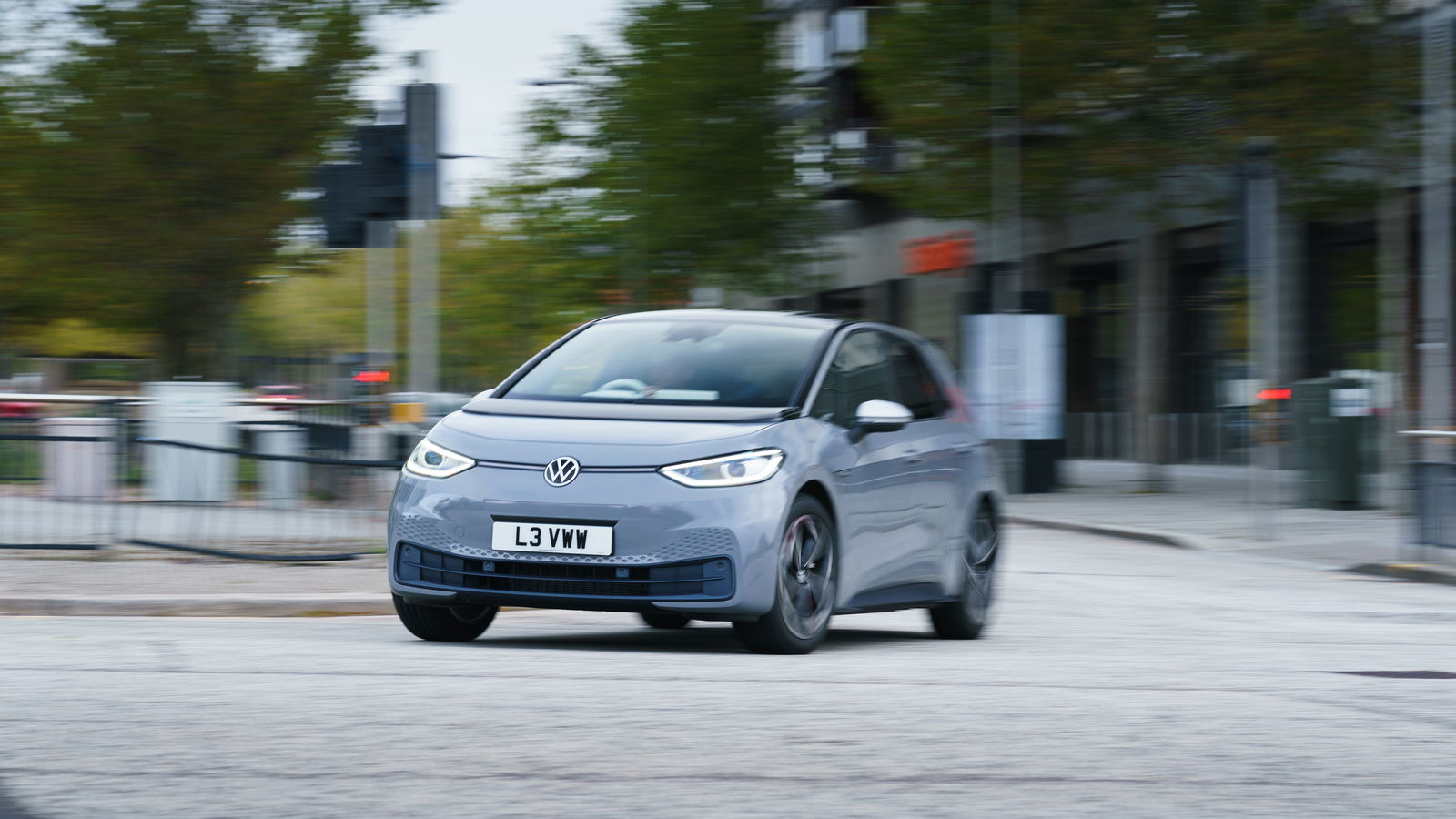
The phrase “important car” gets bandied about too much by the motoring press, us included. But it’s an absolutely justifiable way of describing what the ID.3 is for VW.
In the wake of dieselgate, VW is betting big on an electric revolution. The ID.3 is the first of many BEVs, as the German car giant seeks to scale production of such cars to a level never seen before in motoring history.
The ID.3 simply cannot be a turd (it’s part of a €30 billion bet that has to pay off so secure VW’s future), and thankfully, it isn’t.
So here are the key things we learned after a weekend with a 1ST edition.
The interior is mostly good
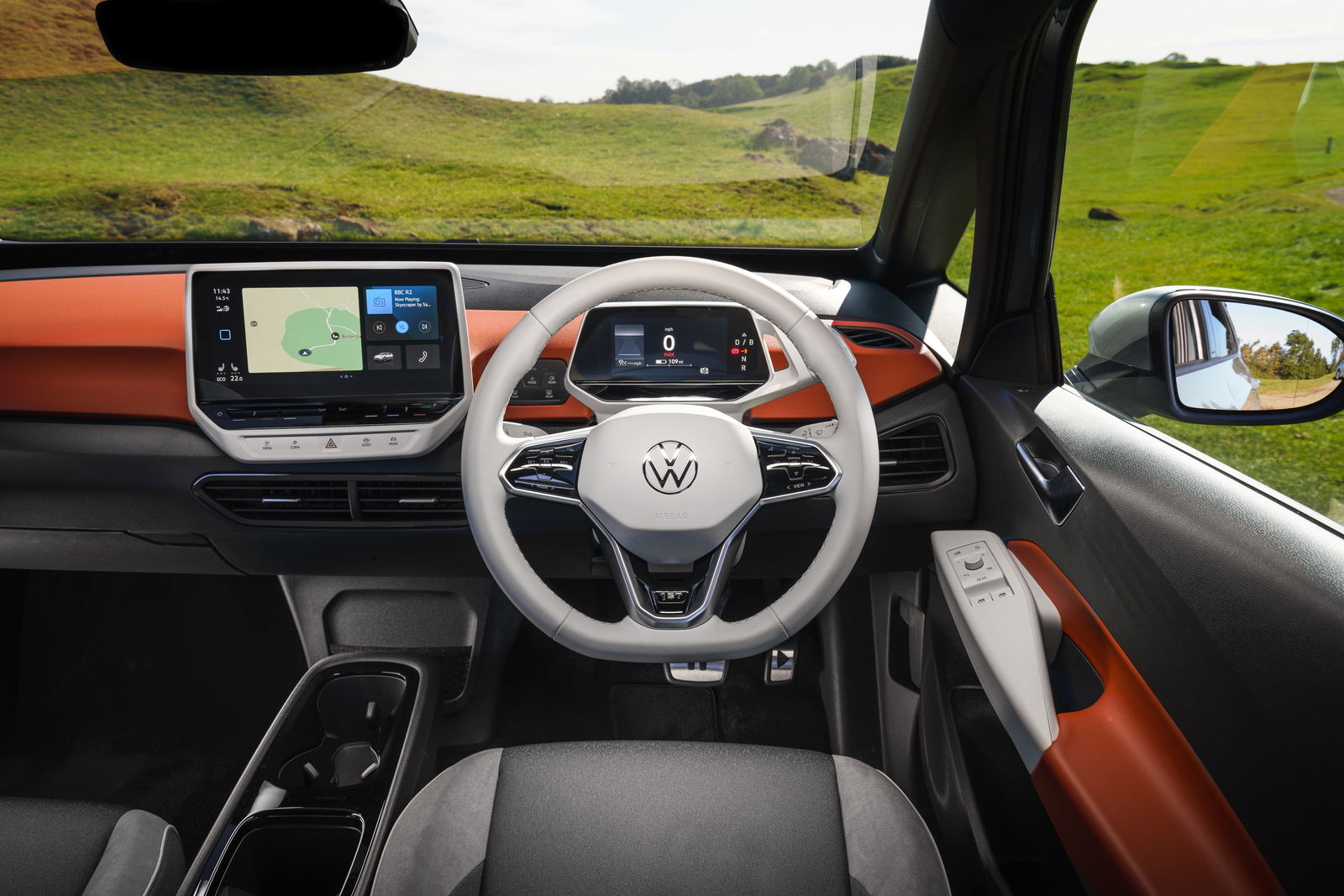
Something you can enjoy in the ID.3 every time you get behind the wheel is the roomy-feeling glasshouse. The lack of engine results in a small bonnet, making it possible to stretch the windscreen much further forward than we’re used to.
You get a flat floor and an abundance of space around your legs (no pesky transmission tunnel here) and a vaguely interesting two-piece dashboard. A small digital instrument cluster is mounted on a plinth attached to the steering column, with a weird, rotating trapezoid appendage sprouting to the side used to select drive, neutral or reverse.
It’s lightly futuristic in a pleasant sort of way, but some cheap-feeling bits put a downer on proceedings, such as the scratchy plastic door cards. The infotainment system also isn’t the easiest thing to navigate either, and could do with being more responsive. What’s more, it’s frustrating that a good number of the climate controls are embedded within it.
It feels brisk rather than fast

As with other moderately powerful EVs - like the Peugeot e-208 - the ID.3 feels stupidly quick up to 30mph, but peters out a little beyond that point. However, the throttle response is sharper than the Pug - and the Honda E, for that matter - while the 0-62mph time is impressive.
Its 201bhp, 229lb ft powertrain is good for a 7.3sec 0-62mph time, making it similar to a MkV VW Golf GTI. The top speed is a lot lower, though, capped at just 99mph.
There were a few bugs
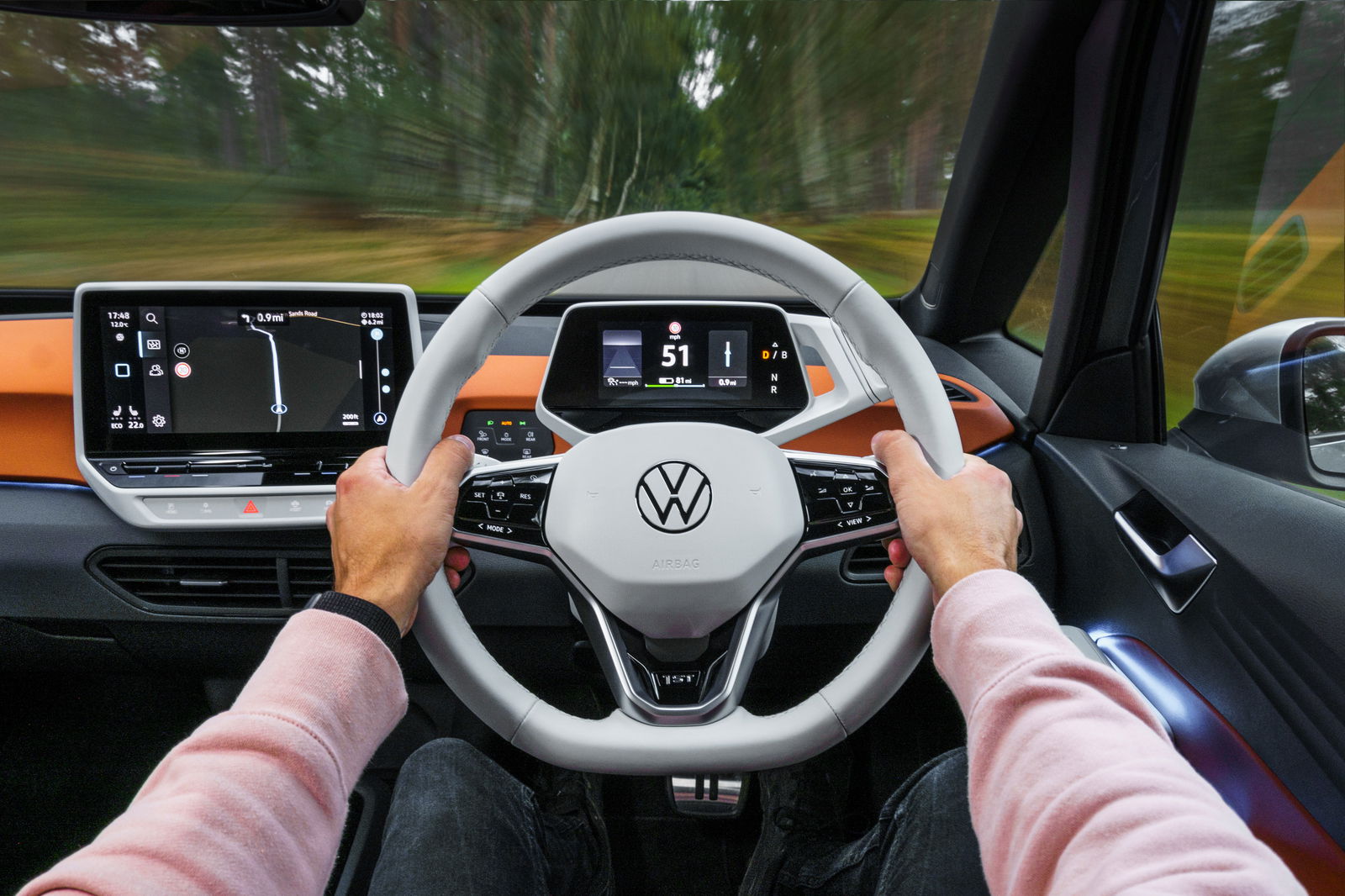
The ID.3’s launch was delayed by some well-publicised software issues, and it looks like there are still some faults to iron out. On our first drive, the ‘Mode’ button gave audio feedback but did naff all else, and we also experienced some odd issues with the cruise control.
On one drive on a 70mph motorway, the ID.3 kept automatically adjusting the adaptive cruise control to 44mph (70kmh). Later, on a 60mph road, it kept trying to put the car down to 37mph (60kmh). It also had a habit of slowing the car down when overtaking lorries.
This seemed bizarre until we learned the ID.3 has a known software issue which means UK market cars occasionally behave as though they’re being used in a country that drives on the right. Hence the car thought we were undertaking people, and why it was reading speed limits as KMH and adjusting the cruise accordingly.
At the time of writing, we were waiting on a more detailed technical run-down of the problem, but we do know a fix is coming in January.
The real-world range is about 200 miles
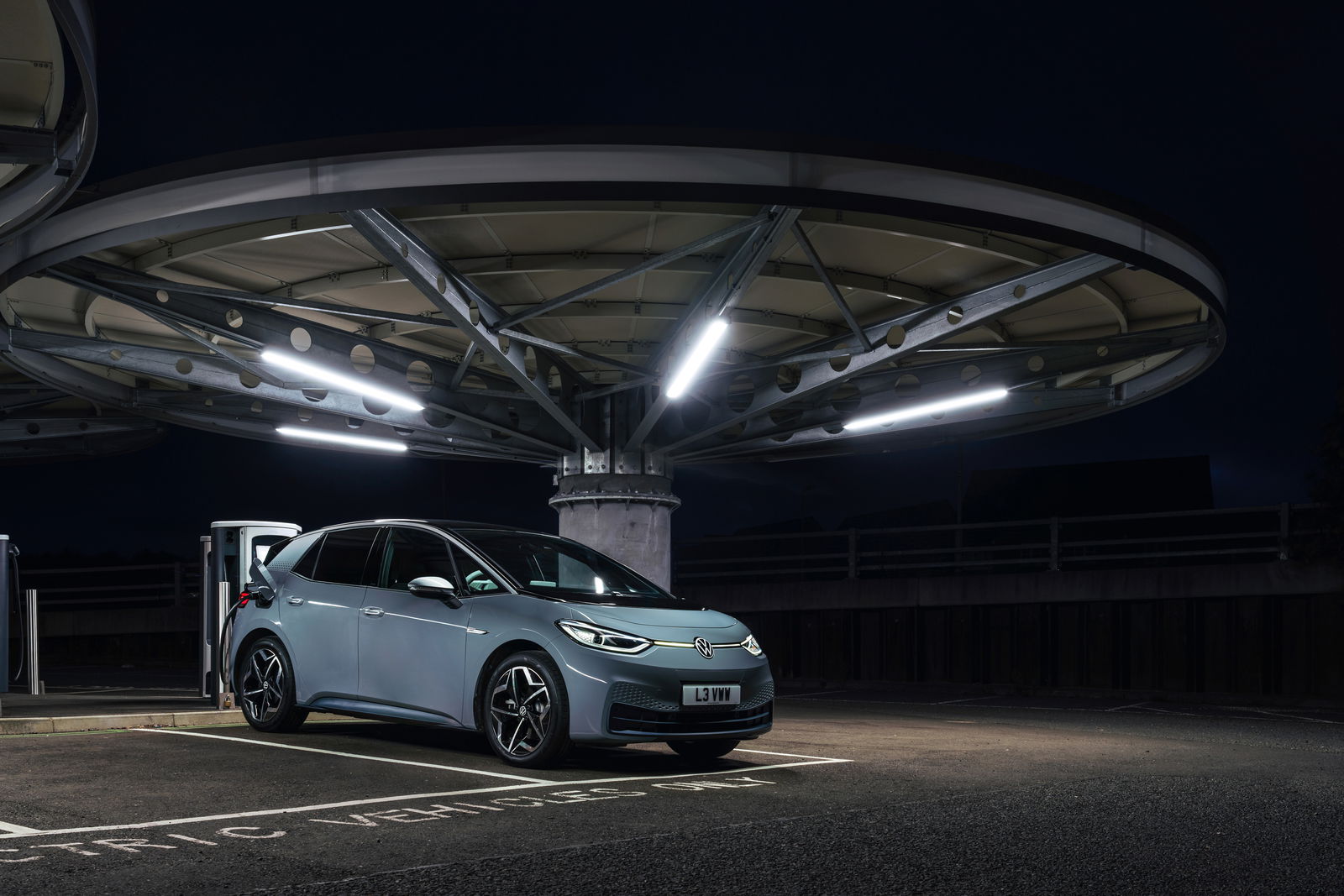
‘Our’ 1ST had the mid-range 58kWh battery pack, which gives a range of up to 261 miles. In reality, a figure of around 200 miles is closer to what you’d expect. Motorway miles seem to clobber the battery more than other EVs we’ve tried lately, and by the end of the loan, our average consumption was 3.3 miles per kWh. Not bad, but nothing to get too excited about either.
Once you need a top-up, 100kW fast charging capability means you can get an 80 per cent charge from empty in just 30 minutes. If you’d rather go further between charges, there’s a 77kWh battery available with an official range of 342 miles and 125kW charging capability. For anyone happy to make do with less, a 45kWh battery will soon join the line-up too.
It oversteers (a little)
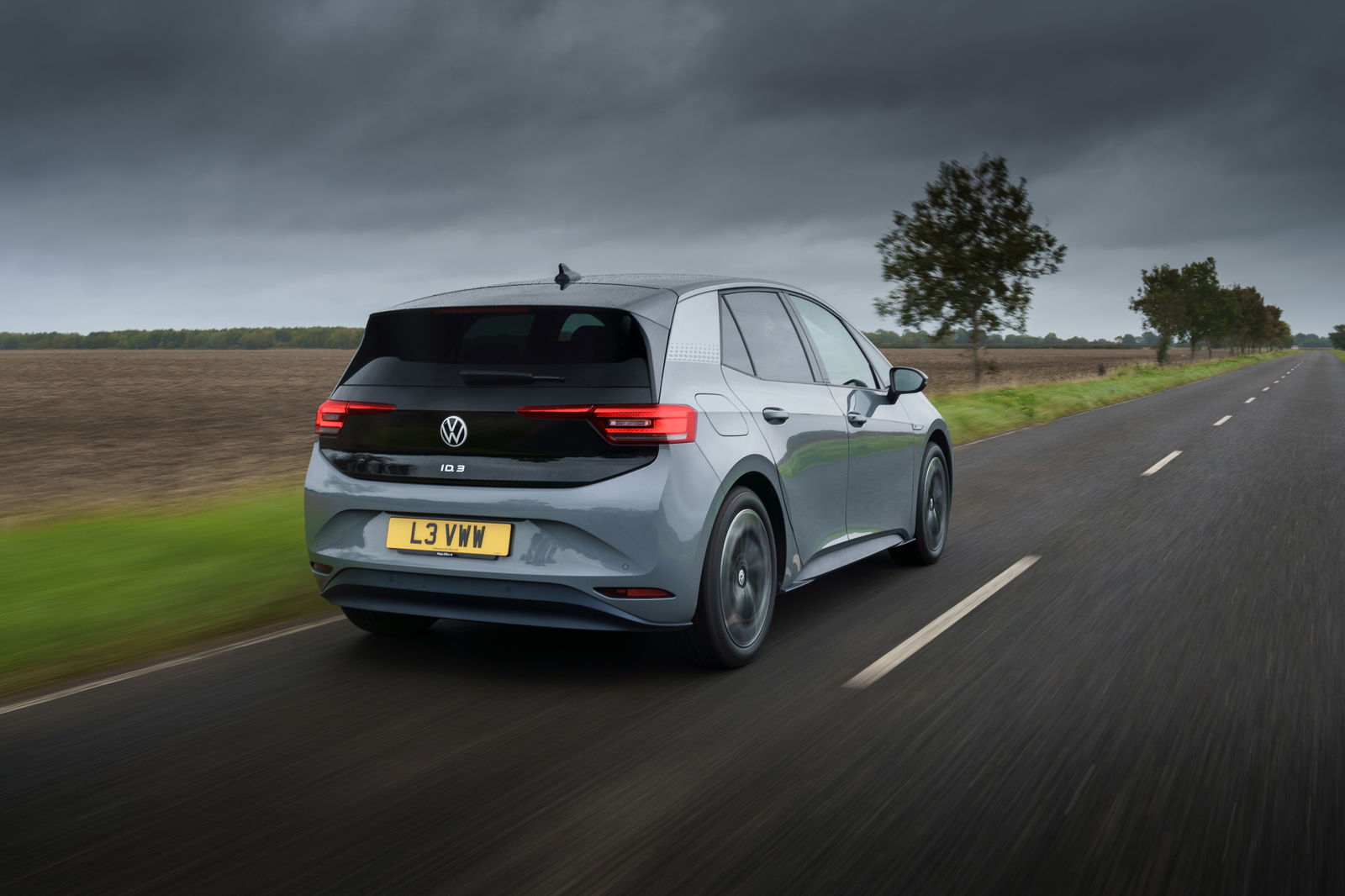
VW’s MEB architecture features a rear-mounted motor, and yes, you do feel that at times. Get too greedy with the throttle mid-corner, and the back end will step out slightly before the traction control aggressively takes most of the power away. You can turn it off, but it’s buried so deep within the ID.3’s infotainment screen that we only found out just as the car was due to go back.
In any case, you’re more likely to feel understeer. The low-rolling resistance, relatively skinny Continental EcoContact 6 tyres and the porky circa-1700kg weight figure make that an inevitability, but dial things back a bit, and the ID.3 can be great fun to drive on a good road.
It’s well-damped, resisting excessive body roll while shrugging off bumpy bits of road. The steering is light and fast, and there’s even a Sport mode. Not that it makes a huge difference to the way the ID.3 drives when engaged.
On more relaxed jaunts, the ID.3 feels quiet and effortless to drive, eating up the miles just as well - if not better - than a Golf.
It can get expensive, but it doesn't need to
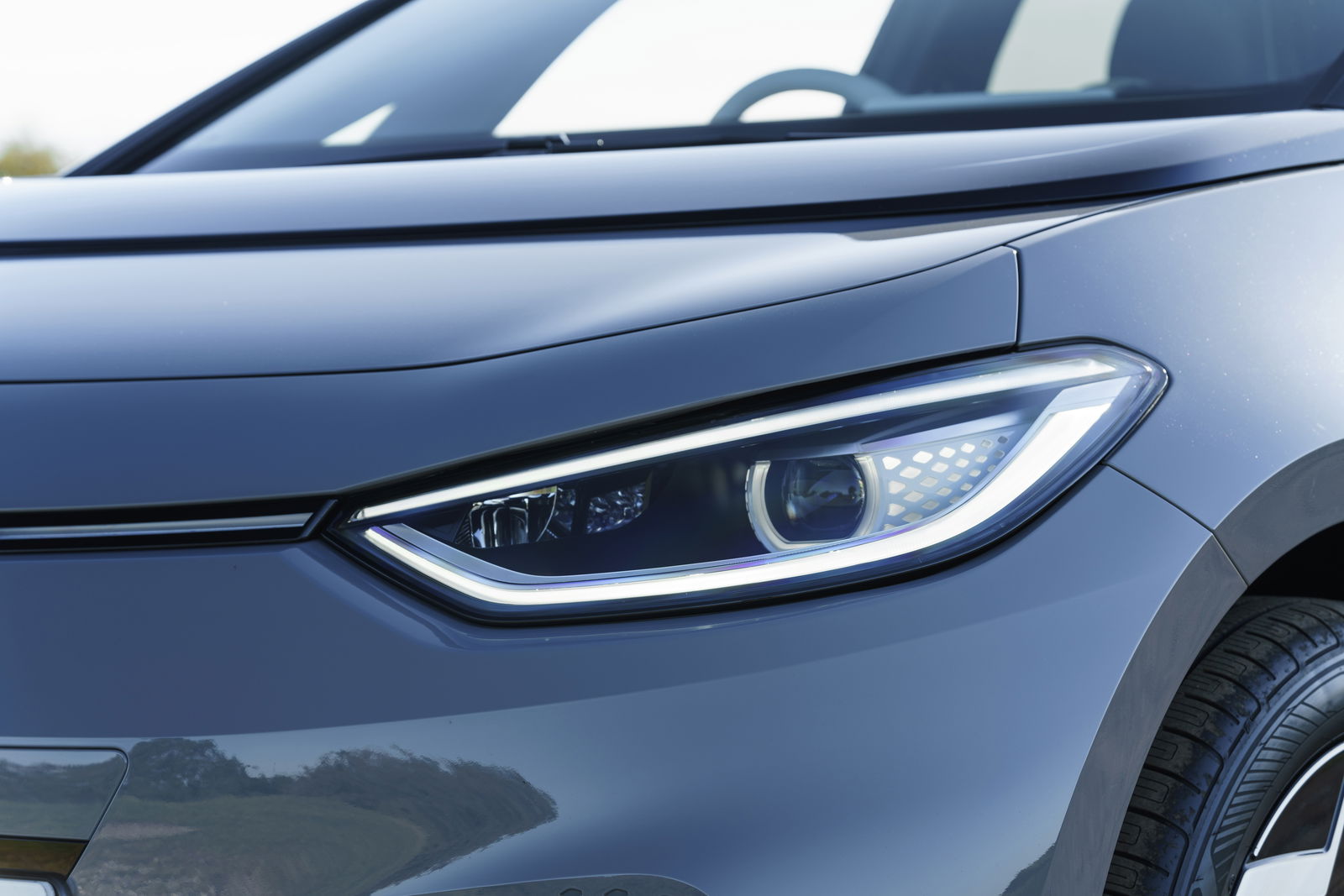
With options, the 1ST we tested was £35,745. However, VW has since announced prices for the wider (and somewhat confusing, it must be said) range, with the entry-level ‘Life’ model coming in at £29,990 with the government grant taken into account. And that’s with a 58kWh battery. The incoming 45kWh unit will give the ID.3 an even more attainable entry-point.
We’ll have to wait until the various PCP and lease deals start rolling in to see how the ID.3 works out on a monthly basis, but jumping from a Golf to one of these shouldn’t be an insurmountable one for most.
It makes up for the *just fine* Golf 8
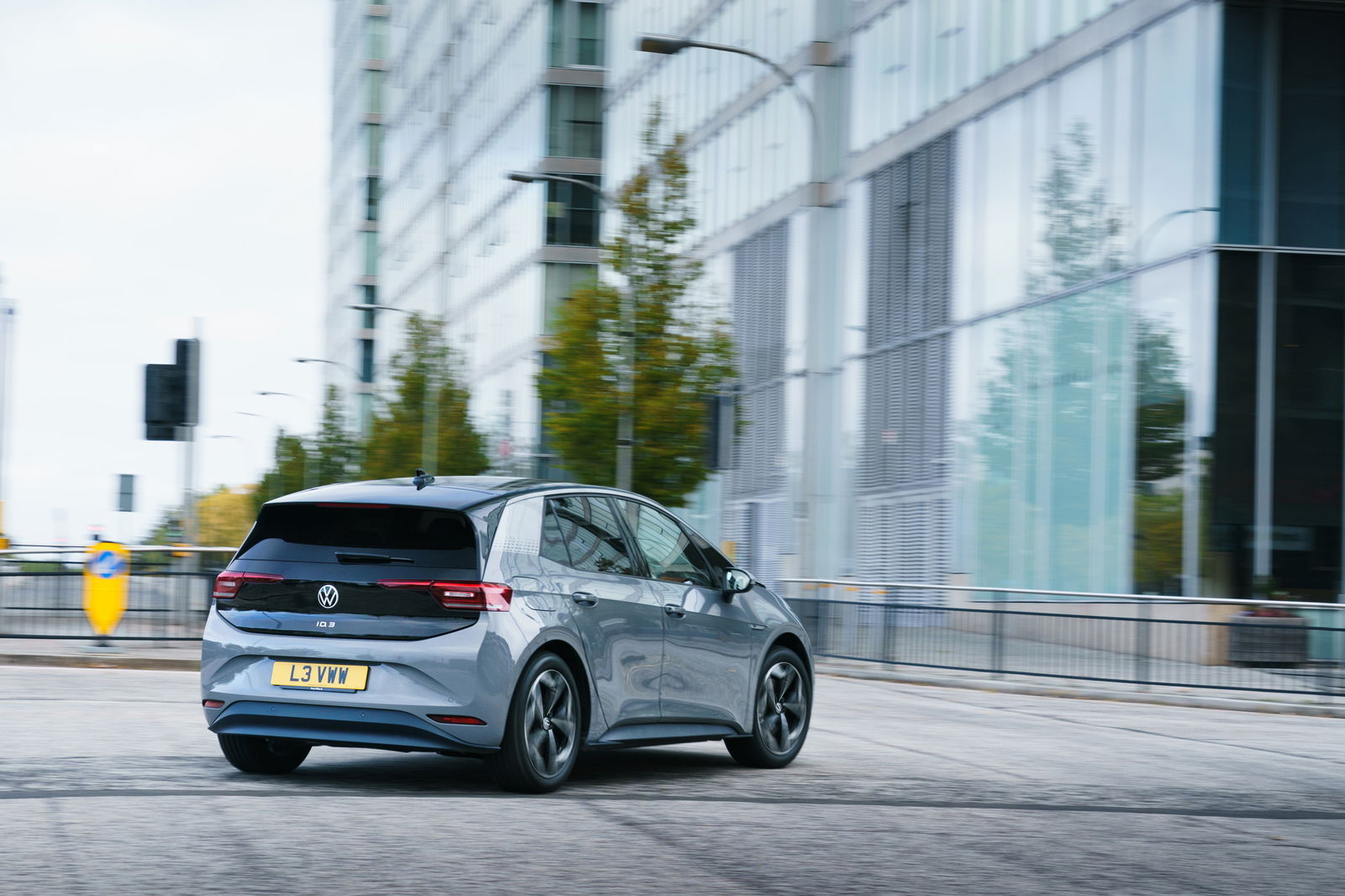
Speaking of the Golf, the ID.3 presents an interesting contrast to the eighth-generation version of the hatchback we drove earlier this year. There wasn’t anything especially wrong with it, but it didn’t really move the game on a whole lot from the Golf 8, and we had more gripes than expected.
The far more interesting, on the whole very successful ID.3 makes up for the slightly meh Golf, but perhaps there’s a link there. With all that money being chucked at the development of the ID.3 and its incoming plug-in chums, perhaps it was inevitable the Golf would suffer a bit.
Or, if you’ll allow us to briefly don a tin-foil hat, maybe that’s a deliberate ploy to get people in the ID.3. Given the choice, it’s what we’d have because it offers pretty much everything Golf customer want, for a reasonably modest price increase that’ll be offset nicely by lower running costs.
It shouldn’t be long before we see a lot of these things on the road.
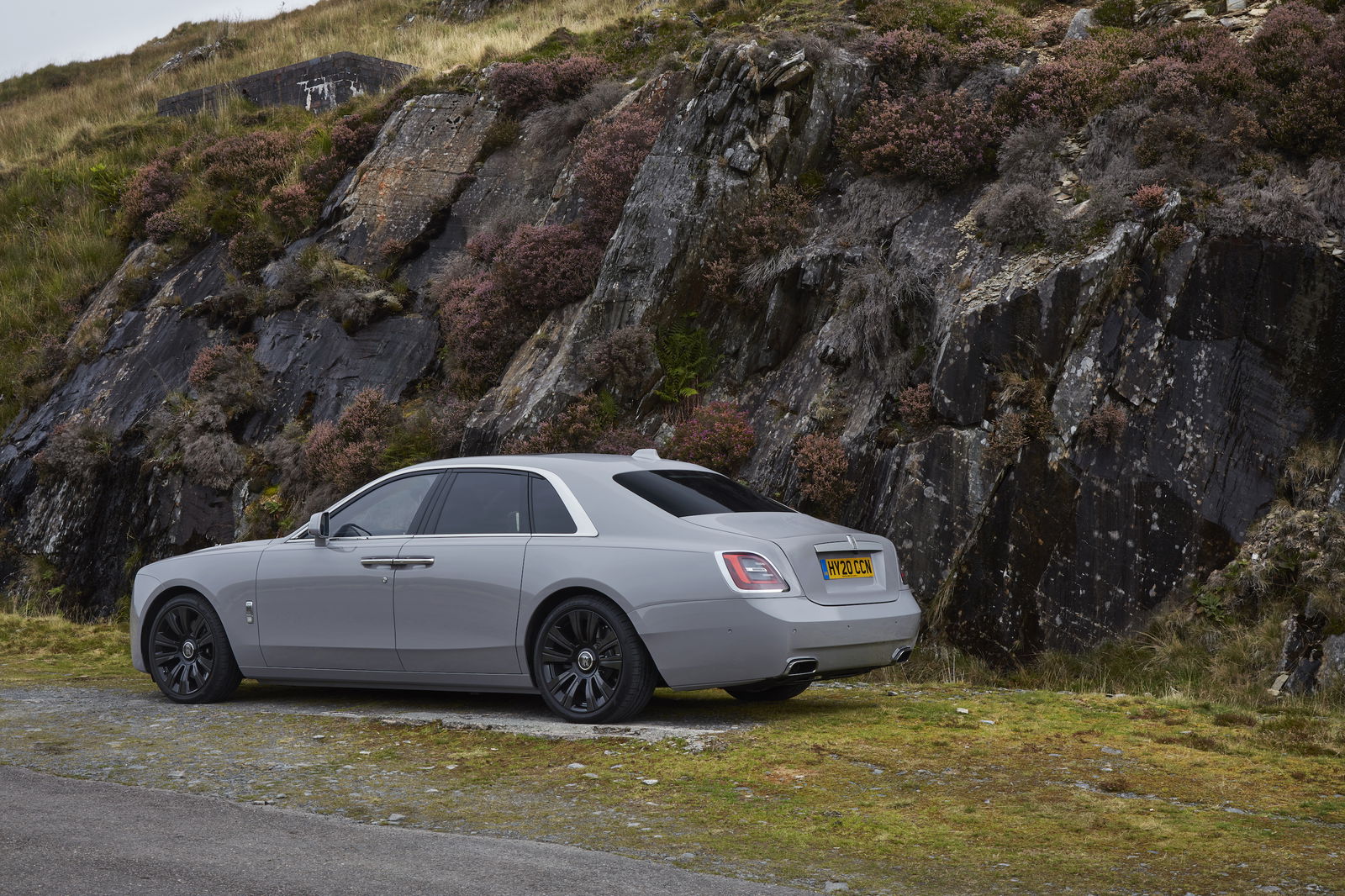
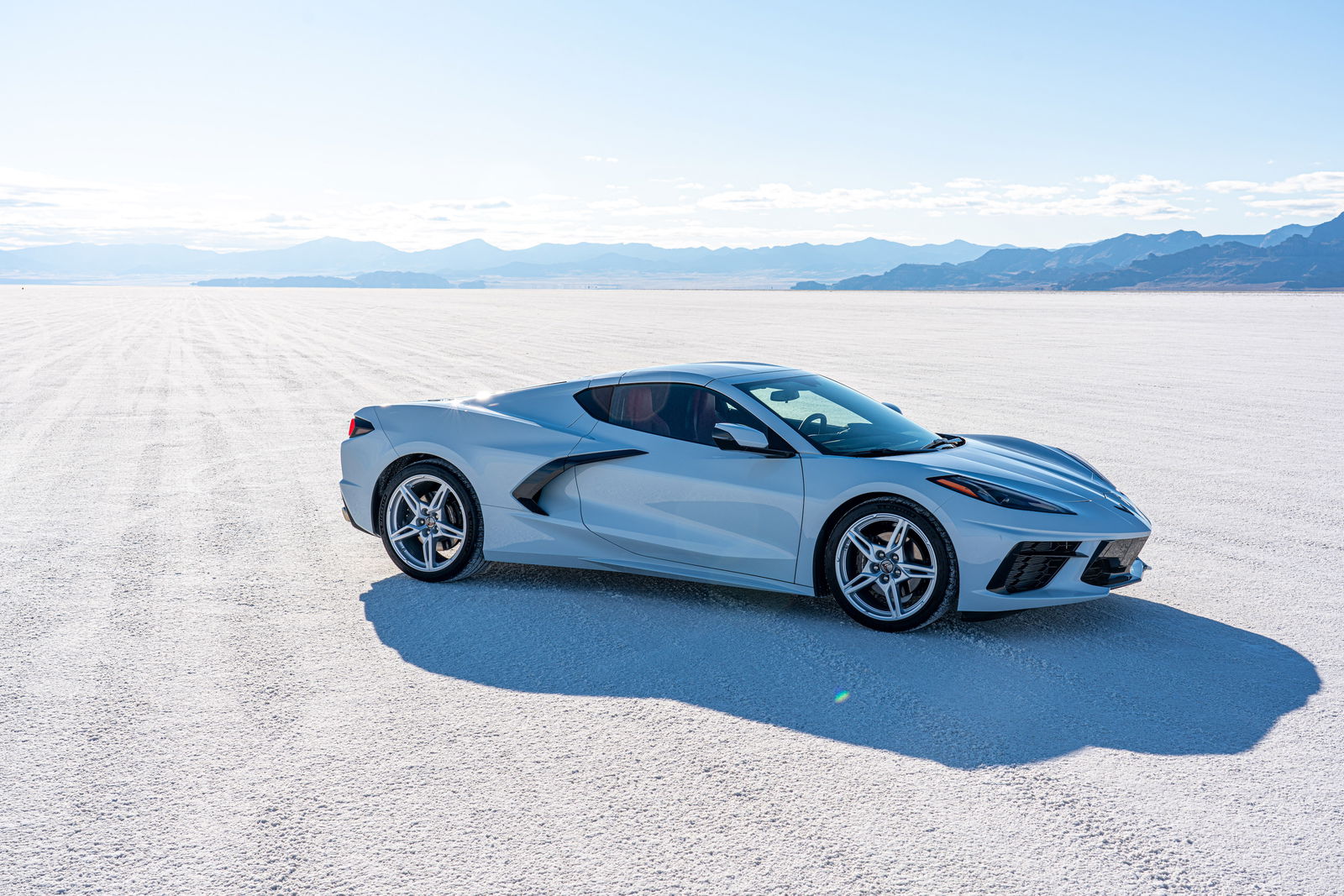

Comments